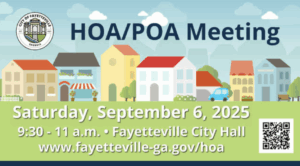A request by parents at last week’s meeting of the Fayette County Board of Education to consider having synthetic turf included on a potential upcoming education sales tax (E-SPLOST) extension and installed on the fields at the county’s five high schools has led to a survey on the proposal. The survey will be available on the school system’s website through March 23.
The proposal advocating for the synthetic turf came from Whitewater High School parent Darrell Baker and McIntosh High School parent Sally Herman. Superintendent Jeff Bearden at the end of the presentation said he would develop a survey for inclusion on the school system’s website.
Spokesperson Melinda Berry-Dreisbach on Monday said the school system would like community input for adding athletic field turf to the E-SPLOST if voters are asked to approve a referendum for renewal in the future.
“It is has been proposed that the board of education add the installation of turf fields at each high school to the E-SPLOST if the board decides to ask voters to extend the current one-cent sales tax,” Berry-Dreisbach said.
The total cost for all five high school fields to have turf installed would be an estimated $3.12 million and would carry a 10-year lifetime. Herman said that having synthetic turf re-surfaced after 10 years amounts to about 60 percent of the original cost since some of the work would not have to be repeated.
Berry-Dreisbach said the current one-cent local option sales tax for education (E-SPLOST) approved by the voters of Fayette County in 2008 will expire in 2013. This E-SPLOST has paid for various technology upgrades (21st Century Classroom), new schoolbuses, textbooks, and facility improvements and renovations. It has also helped to reduce the bond debt and lower the millage rate for homeowners, she said.
State law prohibits E-SPLOST monies from being used for salaries or instructional materials. The funds can only be used to pay for capital projects or to retire debt, Berry-Dreisbach said.
Berry-Dreisbach said projects funded by E-SPLOST proceeds are prioritized by the board of education. If turf fields were included on the project list, they would be prioritized based on the importance of need when compared to other identified projects.
Go to the school system’s webpage, www.fcboe.org, to view the presentation made at the March 5 workshop and take the one-question survey. The survey will remain on the site through March 23.
Herman at the March 5 meeting said the initial cost of turf fields is high, though over a 10-year period those fields cost less to maintain than grass fields. Outlining the total cost of installing and maintaining grass fields and synthetic fields over 10 years, Herman said grass fields come in at $480,500 while turf fields have a cost of $629,000. Noting that there is more to the story, Herman said that grass fields over 10 years can sustain 10,000 hours of play while turf fields can accommodate 30,000 hours of play. That difference translates into a per hour cost of $48 for grass fields and $21 for artificial turf fields, she said.
“It boils down to grass not being able to take the amount of play consistently. The fields are decimated after spring sports,” Baker said, noting the difficulty parents have in getting the fields in shape for the sports coming up later in the year. It is an expense paid not be the school system, but by booster clubs and parents.











Leave a Comment
You must be logged in to post a comment.